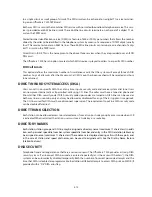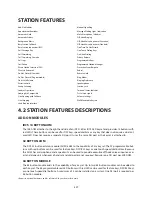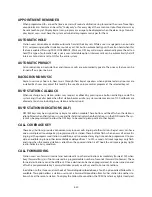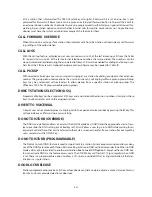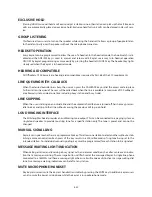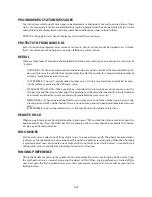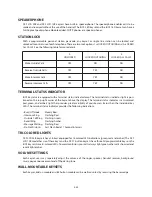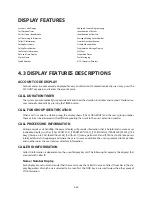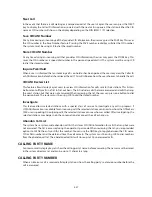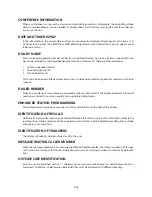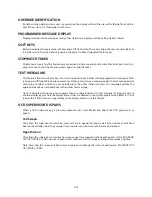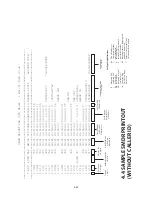
Note: Although most voice mail systems will work with the OfficeServ 7200, the system data has default val-
ues set to work with the Starmail Voice Processing System. They may need to be changed if you are using
another system.
Integrated (In-Skin):
The OfficeServ 7200 can be equipped with Samsung’s proprietary SVMi-20E voice
mail/auto attendant card. This card provides 4 to 12 ports of voice processing to be expandable to 20 ports.
Because it is built into the system it provides such features as one touch call record, answering machine emu-
lation, and voice mail box administration with interactive keyset displays. See separate SVMi-20E documen-
tation.
Voice Over Internet Protocol (VoIP)
The OfficeServ 7200 system is VoIP enabled and as such supports the following VoIP services:
1)
H.323 Trunking to another H.323 Gateway.
2)
SIP IP Trunking to another gateway.
3)
IP Telephone Sets: OfficeServ ITP-5021D Keyset, OfficeServ ITP-5012L Keyset, and OfficeServ Softphone.
These IP Keysets can be installed in the local office or in a remote office, home office with full feature
operation.
4)
IP Networking: Connect up to 15 systems together over a managed IP network.
The OfficeServ 7200 Media Gateway Interface (MGI) cards support up to sixteen voice calls per card over an
IP network connection. The MGI cards fit into any universal OfficeServ 7200 card slot. The OfficeServ 7200
supports a maximum of ten MGI cards per system. VoIP is transported by the OfficeServ 7200 MGI cards by
utilizing the ITU standards based or H.323 or SIP protocol. This standard addresses the means of transferring
voice, data, and images through IP (Internet Protocol) networks.
With VoIP certain compression standards have also been adopted to represent each second of voice with an
amount of bandwidth. The OfficeServ 7200 MGI utilizes G.711, G.729, G.729A or G.723 standards voice com-
pression codec’s. This allows for a selectable 64kbps (G711), 8Kbps (G729A) or 6.3Kbps (G723) bandwidth use
when preparing voice compression for IP transport. Compression is used to reduce the digitized voice into a
smaller bandwidth that can be carried in smaller packets. The VoIP gateway determines the compression
method for each call setup. There is also a certain amount of frame/packet overhead in each compression
channel. 64K of bandwidth can support 6~7 calls simultaneously. This can vary depending on efficiency fea-
tures like Silence Suppression and multiframe counts. Unlike switched networks, VoIP connections consist of
a sequence of numbered data packets. Since voice conversation is usually considered “real time” these pack-
ets need to be delivered in a consistent manner with minimal delay. This can be controlled via a Gatekeeper
which tracks and monitors voice packets. Gatekeepers are part of the H.323 standard but are not required.
The OfficeServ 7200 MGI cards are Gatekeeper compliant.
In any Ethernet environment, packet transfers are subject to delays and/or loss. If these delays are greater
than 200ms the voice quality will deteriorate. The Ethernet data traffic and network topology should be a
consideration when using VoIP. Network congestion will affect call quality in any VoIP application.
WALKING CLASS OF SERVICE
This feature allows users to make calls or use features from a station that is restricted. The users may either
use the WCOS feature code or the authorization code feature. Both methods change the class of service to
correspond with the station passcode or authorization code that is dialed. After the call is completed, the sta-
tion returns to its programmed class of service.
WIRELESS LAN—
See Section 2.4.5
4.28


